Osteochondrosis is a pathology known in 40% of the population under 35-40 years of age and almost 90% for old age. Even adolescents sometimes reveal signs of osteochondrosis - reducing the height of the discs, pain, discomfort in the spine. If you start treating the disease at the first stage, before the disk is destroyed, the chance of stopping progression is very high.
With osteochondrosis of the spine, one or more intervertebral discs appear. The disease can occur in any department:
In severe cases, degeneration of vertebrates against the background of osteochondrosis is observed throughout the pillar, which causes human damage. So what is this disease - osteochondrosis? The pathology is associated with a gradual, stable and progressive disorder of the nutrition of hyaline cartilage located on the intervertebral discs, resulting in their position, shape, crack. One experiences severe pain syndrome, the functions of the entire musculoskeletal system are impaired.
What is osteochondrosis about its consequences? If you do not do treatment, the vertebrae will be compressed, the cracks between them will decrease and the discs appear to fall apart. This will lead to damage to the nerve roots, damage to the spinal cord and impaired function of the internal organs. Bone osteophytes appear at the edges of the discs - outgrowths that cause even more pain. The consequences of this spinal disease are very serious.
Scientists have come to conclusions, studying osteochondrosis that this disease is a consequence of a person's density, so most people are subject to it. Daily high loads of the spine, worsening of the age of vascular functions, inferiority of nutrition and aging of the body are the main causes of osteochondrosis. The following factors are weighed by the situation: 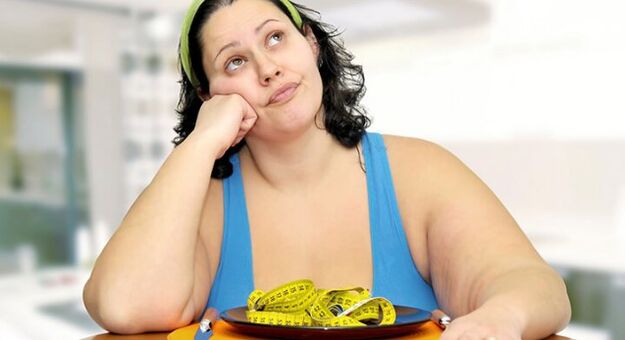
Injuries, severe physical activity significantly exacerbate the development of osteochondrosis of the spine. Therefore, athletes, physical labor staff, lower back osteochondrosis - a very "popular" problem. Heredity also plays an important role in the pathogenesis of the syndrome - if parents at a young age have had serious problems with their back, the child has a high risk of getting spinal disease.
Psychosomatic causes of pathology are a new direction in the search for prerequisites for its formation. Psychosomatics implies the influence of psychological factors on the development and course of physical illness. The relationship between bodily and mental problems is truly packed and a healthy person can suffer from regular pain. With osteochondrosis, some people have no objective causes of pathology, but it continues to progress.
Up to 30% of patients after a visit to the doctor show such problems as:
The intervertebral disc consists of liquid and solid parts. The first is in the center, which is a nucleus, which gives elasticity. The nucleus is surrounded by a strong ring on top. It is with the liquid structure that all pathological changes in the disk begin, which are later spread in its shell.
Four stages of osteochondrosis are distinguished in medicine. This refers to the conditional unit of pathology through the severity of spinal disturbances: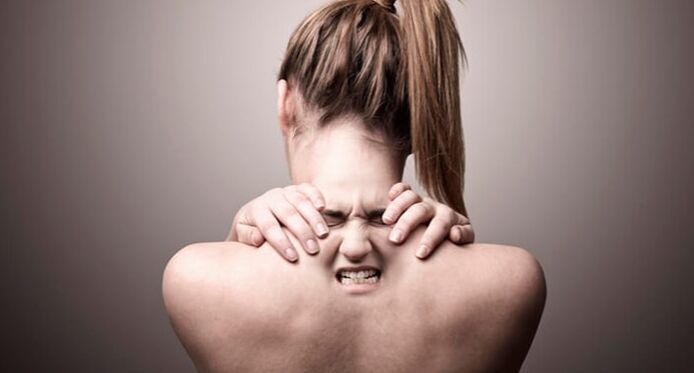
The first signs of osteochondrosis usually begin at the initial stage when there is still no pain. On the neck, the lower back, less often - in the chest area, when you move, you can hear crunching (this means a violation of the power of the disk, its dehydration). In addition, during overloading, working in an uncomfortable position, one can note the stiffness of the muscles of the back or neck. They become a "stone" on one or two sides, which is uncomfortable, causes burning, irritation.
Subsequently, the symptoms of osteochondrosis become more evident. At rest one can feel normal, but to work, lifting weights, sleeping on an uncomfortable pillow can provoke such phenomena: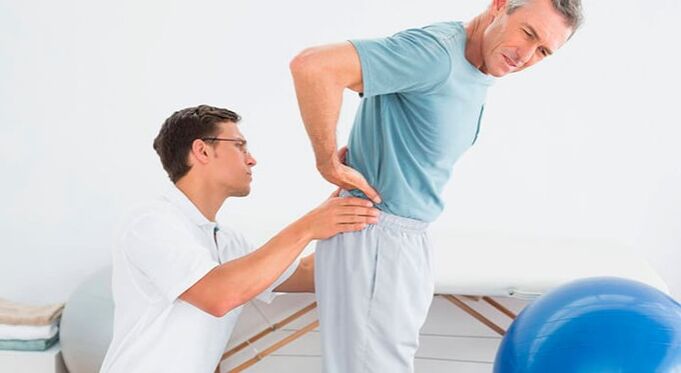
When overloading the patient's spine, osteochondrosis gives more pronounced signs and symptoms. The pain occurs in the shoulders, gives it to the hands, elbows, headache appear. With osteochondrosis of the cervical spine, there is noise in the ears, dizziness, spinal artery syndrome develops and vision is impaired. Over time, no muscle atrophy occurs without the treatment of osteochondrosis, the skin becomes pale. The course of pathologies of the heart can worsen, liver, gall bladder and gastrointestinal tract is impaired.
The consequences of this disease are always unpleasant, they cause an increase in pain. With osteochondrosis there is:
The danger for a person largely depends on the type of hernia for osteochondrosis of the spine. They are in front, back, side, and the most dangerous are posterior hernias - they can pull out the spinal cord. In the lumbar segment of the spine, hernia is the most common, mainly between 4-5 vertebrae.
Lumbar osteochondrosis can cause many unpleasant symptoms - shelters (Lumbago). Lumbago pain is burning, acute, unbearable, it is very difficult to withstand. The reason is the nerve is pressed because the patient is damaged by a neuromustic package. Particularly dangerous for osteochondrosis of the horse syndrome as a result of the functions of the intestine, the bladder, even paralysis of the legs can even occur.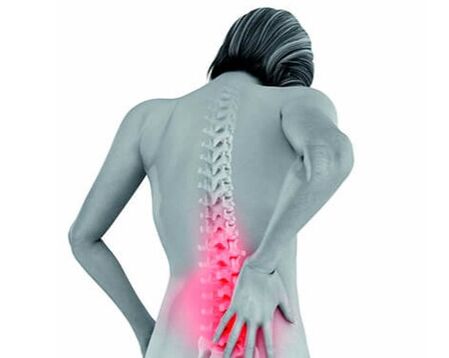
The signs of osteochondrosis are often reduced to severe muscle atrophy. If the muscles do not participate in the body for a long time, the movements of the spine are limited, then the individual fibers weaken. As a result, the patient can become a person with disabilities adhered to the bed. Cervical osteochondrosis is also very dangerous, as hernia in this segment can cause impaired blood supply to the brain. At this stage, there is a risk of visual damage, swallowing, speech and other brain functions.
By independent recognition of the signs of osteochondrosis, you should consider its treatment. Since spinal lesion can reach different stages, the treatment of osteochondrosis will also be uneven. It is important to make the right diagnosis so that the therapy is selected properly.
Due to the widespread spread of the disease and the presence of characteristic symptoms, the doctor will be able to take the diagnosis on a preview. But for the differentiation of osteochondrosis, the following diagnosis is performed from other back and internal organs:
With osteochondrosis, laboratory tests do not play a paramount role, but delivery of general analysis requires biochemistry to exclude the inflammatory process, rheumatoid lesions of the bones, joints. To examine muscle function, the doctor performs a number of physical tests and to clarify the work of blood vessels and nerves, they make duplex, electromyography.
If, with osteochondrosis, the symptoms and treatment are determined, it is not worth slowing down with therapy - the disease progresses quickly. At an early stage, gymnastics is usually recommended, a massage to strengthen the muscles - this will be enough. Other stages of osteochondrosis will require treatment with drugs and sometimes surgery.
Pain relief is the most unpleasant sign of the disease -you can use non -steroidal anti -inflammatory drugs. They cannot cure osteochondrosis, but are always prescribed before the symptom relief exercises. In severe cases, medicines are administered for injections, but more often they are recommended with a course of 7-14 days in tablets and locally, in the form of ointments.
If a person has a strong painful syndrome in the spine, he or she is injected with glucocorticosteroid injections directly into the area of damage.
Treatment of osteochondrosis is also performed using the following agents:
If osteochondrosis has developed, then only chondroproprotectors give anesthesia and pathogenetic treatment, they are taken in courses for 3-6 months. Other medicines carry the symptomatic effect and do not affect osteochondrosis itself.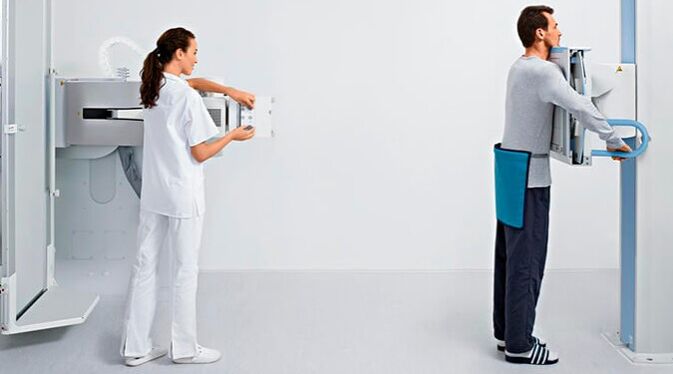
In the list of measures, than for the treatment of osteochondrosis, physiotherapy techniques necessarily include. Thanks to physiotherapy, the treatment of osteochondrosis will be more effective as the action extends directly to the focus of inflammation. Physiotherapy will relieve painful syndrome, eliminate spasms, improve blood microcirculation, help to remove nerve videos. The most popular methods are the following:
All types of physiotherapy must be performed through courses of 10-15 procedures, while individual contraindications are necessarily taken into account.
Exercise therapy in the treatment of osteochondrosis plays a dominant role. Without exercise therapy, it will not be possible to form a strong muscle corset, and the latter is sharp to maintain a diseased spine. Gymnastics also enhances blood circulation in the spinal area, improves metabolic processes and helps to quickly remove the decay products.
How to cure osteochondrosis with gymnastics? The complex is selected only separately and only 1-2 stages can be done without a doctor. In the short stages, unnecessary, stronger movements can cause discs for discs and strengthen the problem. At 3 stages, all exercises are performed only in the casual position.
Massage is required to treat osteochondrosis. In the sharp stage, they do not do it - it will lead to a thrill. But properly performed chronic -stage massage with osteochondrosis is indispensable. After the course of the sessions, the muscles relax, the brackets are removed, the nerves and blood vessels begin to function normally. Massage is performed only in gentle mode, without sudden movements.
In order not to lead to osteochondrosis surgery, it is important to carefully consider prevention measures:
It is also important to eat well, not to smoke, to enrich the diet with vitamins, to consume more fluids - so the likelihood of pathology will decrease.






















